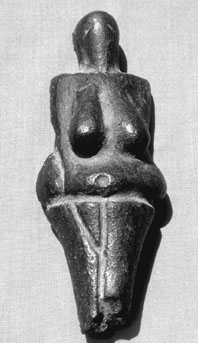

 | Page 426 |  |
(1936–1946) and Sotira-Teppes (1947–1956), early–Bronze Age Bellapais-Vounous (1931– 1932), and late–Bronze Age enkomi (1947– 1957). His work on the earlier periods in cyprus, summarized in his contribution to the fourth volume of The Swedish Cyprus Expedition, is of particular significance, both in providing primary data and in the analytical and conceptual frameworks he developed, which still structure much current research. His substantial publication on the excavations at Enkomi remains the starting point for research on the later prehistory of the island.
References
Price, Stanley. n.d. 1979. “On Terminology and Models in Cypriot Prehistory.” In Studies Presented in Memory of Porphyrios Dikaios, 1–11. Ed. V. Karageorghis. Nicosia: Lions Club.
Stylianou, N., ed. 1998. Photomosaic: Pictures through the Years by Porphyrios Dikaios. Nicosia: Cultural Services, Ministry of Education and Culture.
Excavated by the Czech archaeologist Karel Absolon (1887–1960), Dolní Vestonice is a complex of six open-air sites in Moravia, czech republic, dating from the Upper Palaeolithic period (about 25,000 years ago). The site features an accumulation of bones from over 100 woolly mammoths, hearths, pits, evidence of round dwellings, and a number of burials. Subsequent work in the mid-1980s revealed more burials. The lithic technology (featuring burins, scrapers, and backed blades) is classified as Eastern Gravettian. Perhaps most remarkable of all is the abundance of fired clay, including one complete “Venus” figurine and the remains of two simple kilns, which together are the earliest evidence for pottery anywhere in the world.

Clay “Venus” from Dolní Vestonice, Gravettian, 24,800 b.c.
(Ancient Art and Architecture Collection Ltd.)
The domestication of wild plants and animals (which is a characteristic of the Neolithic period in any given region) has been a worldwide phenomenon occurring independently in southwest Asia, parts of North, Central, and South America, china, and Africa. This change in human behavior arose following the trend toward exploration of a more broad-spectrum economy in the Mesolithic period (approximately 12,000 years ago), when people expanded their hunting and fishing repertoire to include previously unexploited species. Between 10,000 and 5,000 years ago, farming, pastoralism, and sedentism were being adopted on a large scale, although by no means universally.
Domestication of wild species results when humans take control of an animal’s or a plant’s reproductive cycle, causing genetic and phenotypic change. The degree of control people have over their environment can be measured on a continuum, ranging, for example, from herding wild animals to breeding them for specific preselected traits, and it can exist for hundreds of
 |  |